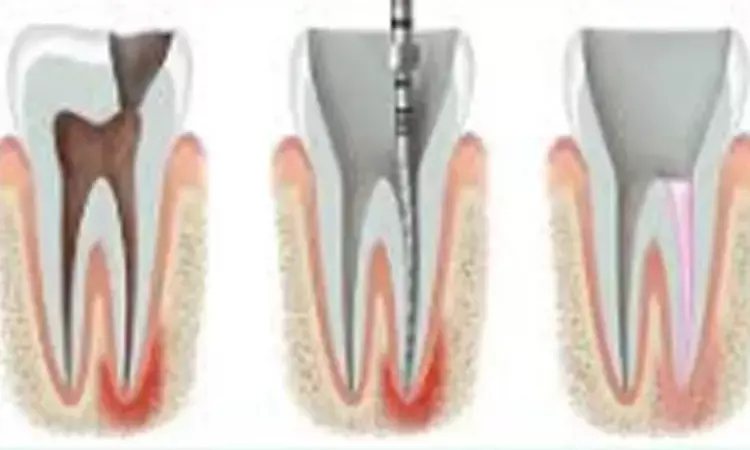- Home
- Medical news & Guidelines
- Anesthesiology
- Cardiology and CTVS
- Critical Care
- Dentistry
- Dermatology
- Diabetes and Endocrinology
- ENT
- Gastroenterology
- Medicine
- Nephrology
- Neurology
- Obstretics-Gynaecology
- Oncology
- Ophthalmology
- Orthopaedics
- Pediatrics-Neonatology
- Psychiatry
- Pulmonology
- Radiology
- Surgery
- Urology
- Laboratory Medicine
- Diet
- Nursing
- Paramedical
- Physiotherapy
- Health news
- Fact Check
- Bone Health Fact Check
- Brain Health Fact Check
- Cancer Related Fact Check
- Child Care Fact Check
- Dental and oral health fact check
- Diabetes and metabolic health fact check
- Diet and Nutrition Fact Check
- Eye and ENT Care Fact Check
- Fitness fact check
- Gut health fact check
- Heart health fact check
- Kidney health fact check
- Medical education fact check
- Men's health fact check
- Respiratory fact check
- Skin and hair care fact check
- Vaccine and Immunization fact check
- Women's health fact check
- AYUSH
- State News
- Andaman and Nicobar Islands
- Andhra Pradesh
- Arunachal Pradesh
- Assam
- Bihar
- Chandigarh
- Chattisgarh
- Dadra and Nagar Haveli
- Daman and Diu
- Delhi
- Goa
- Gujarat
- Haryana
- Himachal Pradesh
- Jammu & Kashmir
- Jharkhand
- Karnataka
- Kerala
- Ladakh
- Lakshadweep
- Madhya Pradesh
- Maharashtra
- Manipur
- Meghalaya
- Mizoram
- Nagaland
- Odisha
- Puducherry
- Punjab
- Rajasthan
- Sikkim
- Tamil Nadu
- Telangana
- Tripura
- Uttar Pradesh
- Uttrakhand
- West Bengal
- Medical Education
- Industry
OneShape rotary instrument retains original canal curvatures, Finds study

Shaping ability of a file plays an important role during instrumentation in an endodontic treatment. Rotary NiTi (nickel-titanium) instruments are designed to shape the canals. Their performance and safety have always been a subject of interest among practitioners in the presence of anatomical challenges.
Canal curvature is a parameter that can challenge the performance of a file; hence respecting the anatomy of a canal in the presence of curvature is a desired characteristic of any rotary instrument considering the root canal morphology.
A recent analysis conducted at the Department of Clinical Sciences, Ajman University, Ajman, United Arab Emirates has found out that among OneShape (OS), Hero Shaper (HS), and Revo-S (RS) instruments, OneShape (OS) file system maintained the original canal curvatures well.
The study is published in the BMC Oral Health Journal.
Pouyan Vakili-Gilani and colleagues aimed to compare the shaping ability of OneShape (OS), Hero Shaper (HS), and Revo-S (RS) instruments in simulated L-shaped canals.
The authors simulated a total of forty-eight L-shaped canals, all of which were prepared to an apical size of 25 using the three file systems: OneShape, Hero Shaper and Revo-S (all from Micro-Mega SA, Besançon, France), with each system being used to prepare 16 canals.
The amount of resin removed after each canal's preparation was measured and compared after producing a composite image made from the superimposition of pre and post-instrumented canals. Canal aberrations and the preparation time were also recorded. The data were statistically analysed by using ANOVA, Tukey, and Chi-square tests.
The study results showed that one file fractured during instrumentation in the Revo- S group. Also, a significant difference was found at the apical end of the prepared simulated canal between the groups, with Revo-S showing the least amount of resin removal from the inner side of the canals and Hero Shaper showing the highest amount of resin removal from the outer side (P < 0.05).
Regarding the total width of the canals after preparation, a significant difference was found between the groups at the apical end and the straight portion of the canals, and Revo-S removed the least amount of resin at the straight portion of the canals (P < 0.05). No statistically significant differences were found between the different instruments regarding canal aberrations' incidence (P > 0.05).
As a result, it was concluded that all of the files showed a tendency to straighten the canals, whereas OS files maintained the original canal curvatures well.
For further reading, log into:
Vakili-Gilani, P., Tavanafar, S., Saleh, A.R.M. et al. Shaping ability of three nickel-titanium rotary instruments in simulated L-shaped canals: OneShape, Hero Shaper, and Revo-S. BMC Oral Health 21, 378 (2021). https://doi.org/10.1186/s12903-021-01734-6
Dr. Nandita Mohan is a practicing pediatric dentist with more than 5 years of clinical work experience. Along with this, she is equally interested in keeping herself up to date about the latest developments in the field of medicine and dentistry which is the driving force for her to be in association with Medical Dialogues. She also has her name attached with many publications; both national and international. She has pursued her BDS from Rajiv Gandhi University of Health Sciences, Bangalore and later went to enter her dream specialty (MDS) in the Department of Pedodontics and Preventive Dentistry from Pt. B.D. Sharma University of Health Sciences. Through all the years of experience, her core interest in learning something new has never stopped. She can be contacted at editorial@medicaldialogues.in. Contact no. 011-43720751
Dr Kamal Kant Kohli-MBBS, DTCD- a chest specialist with more than 30 years of practice and a flair for writing clinical articles, Dr Kamal Kant Kohli joined Medical Dialogues as a Chief Editor of Medical News. Besides writing articles, as an editor, he proofreads and verifies all the medical content published on Medical Dialogues including those coming from journals, studies,medical conferences,guidelines etc. Email: drkohli@medicaldialogues.in. Contact no. 011-43720751


